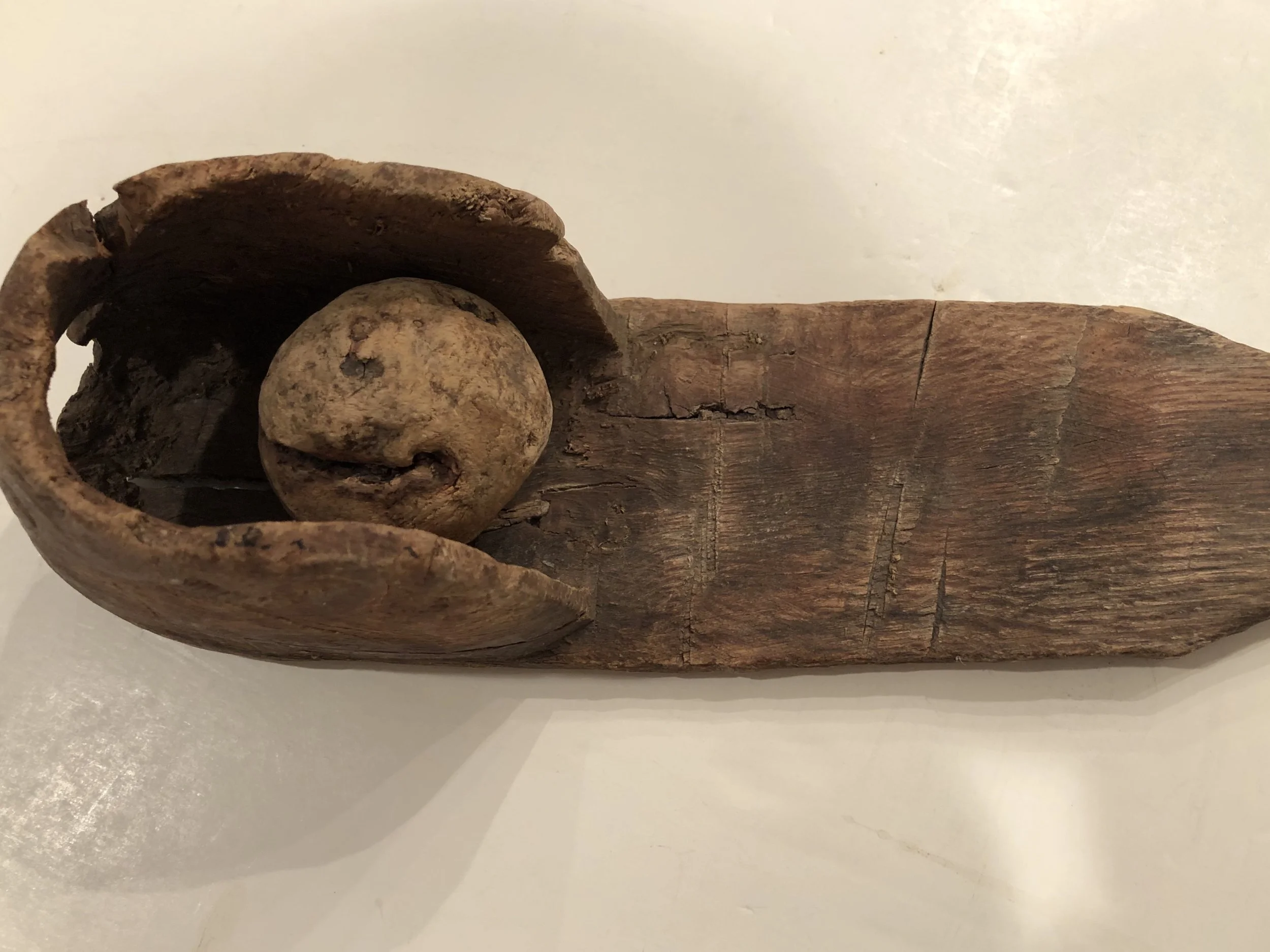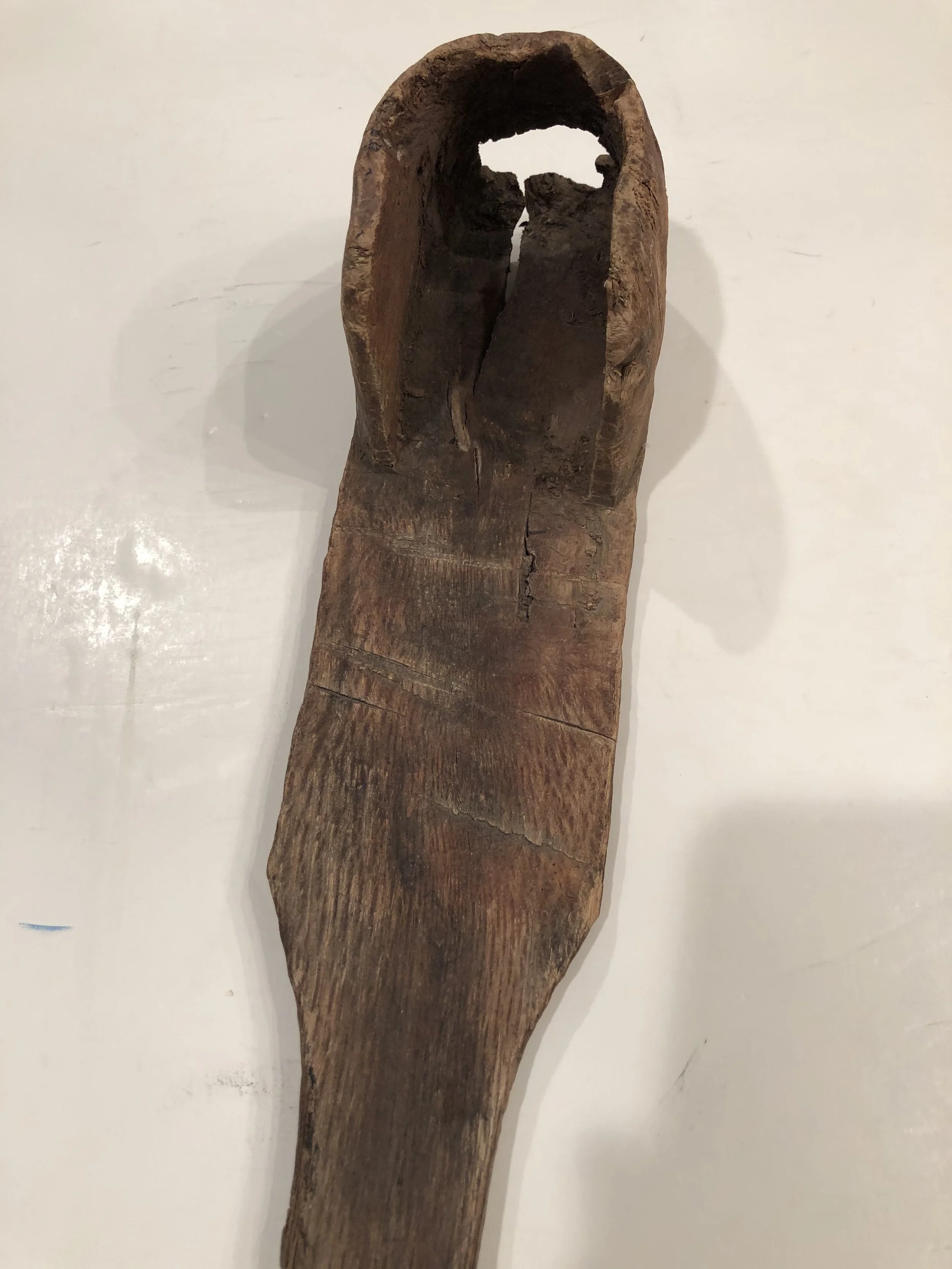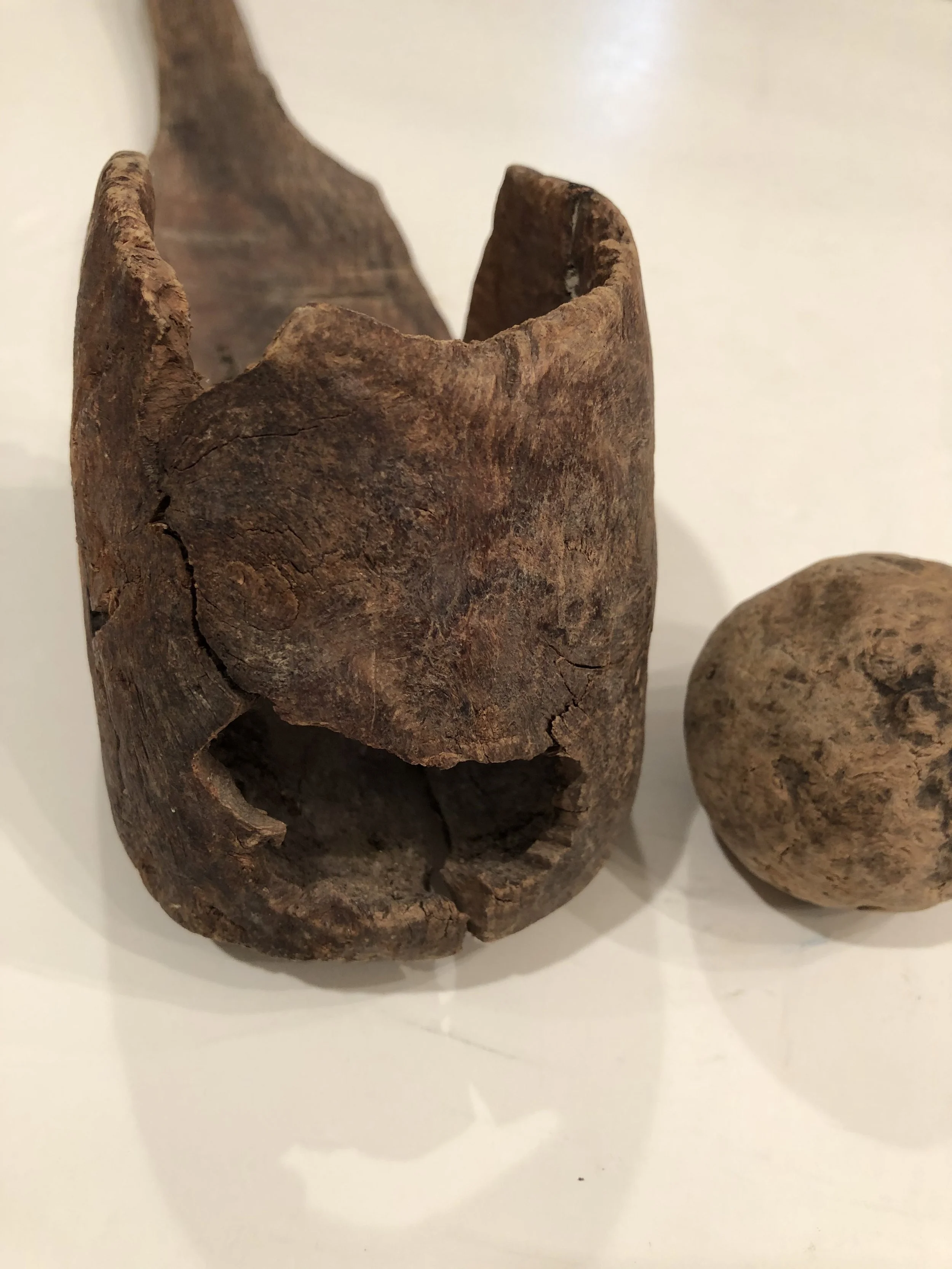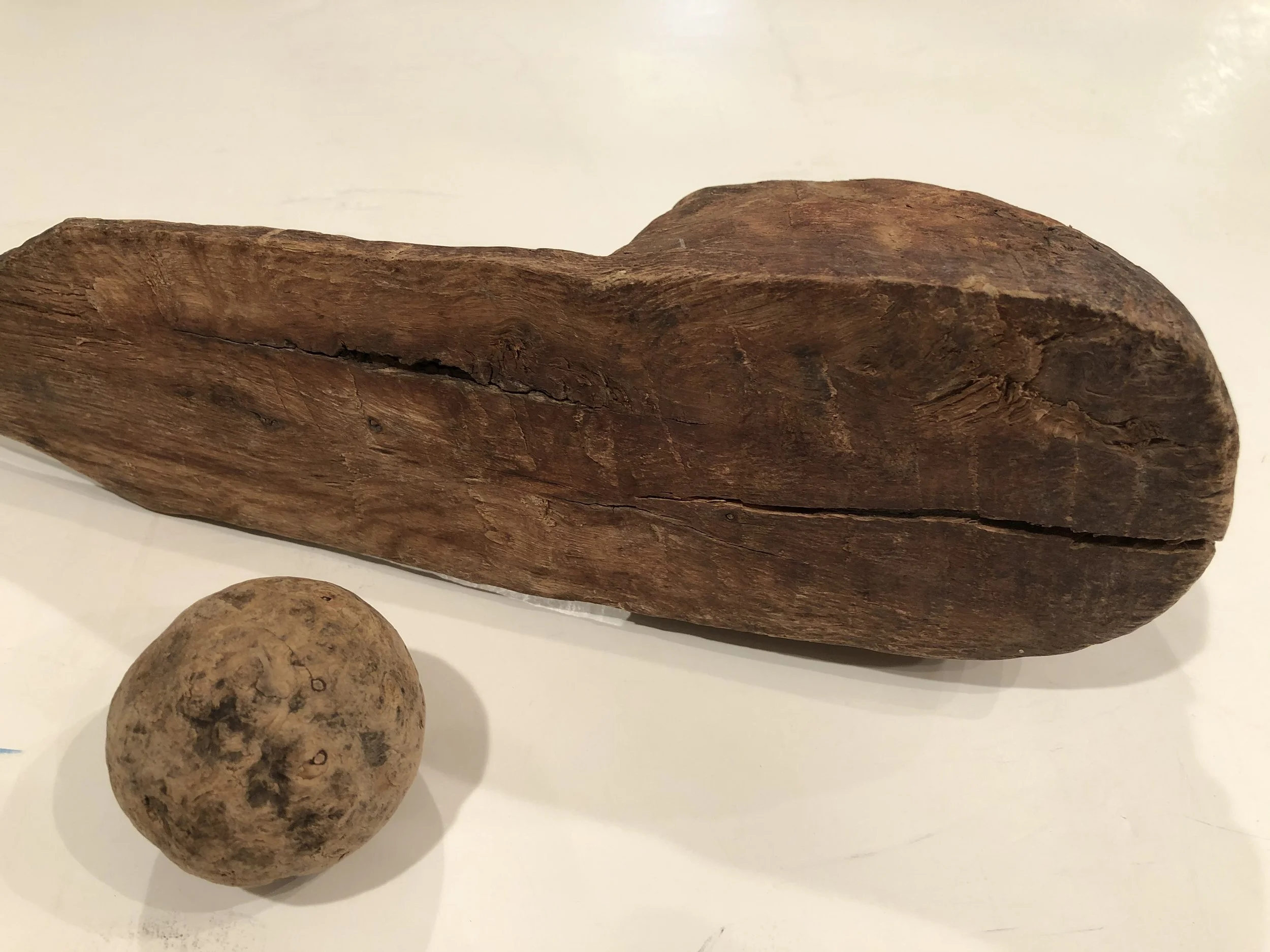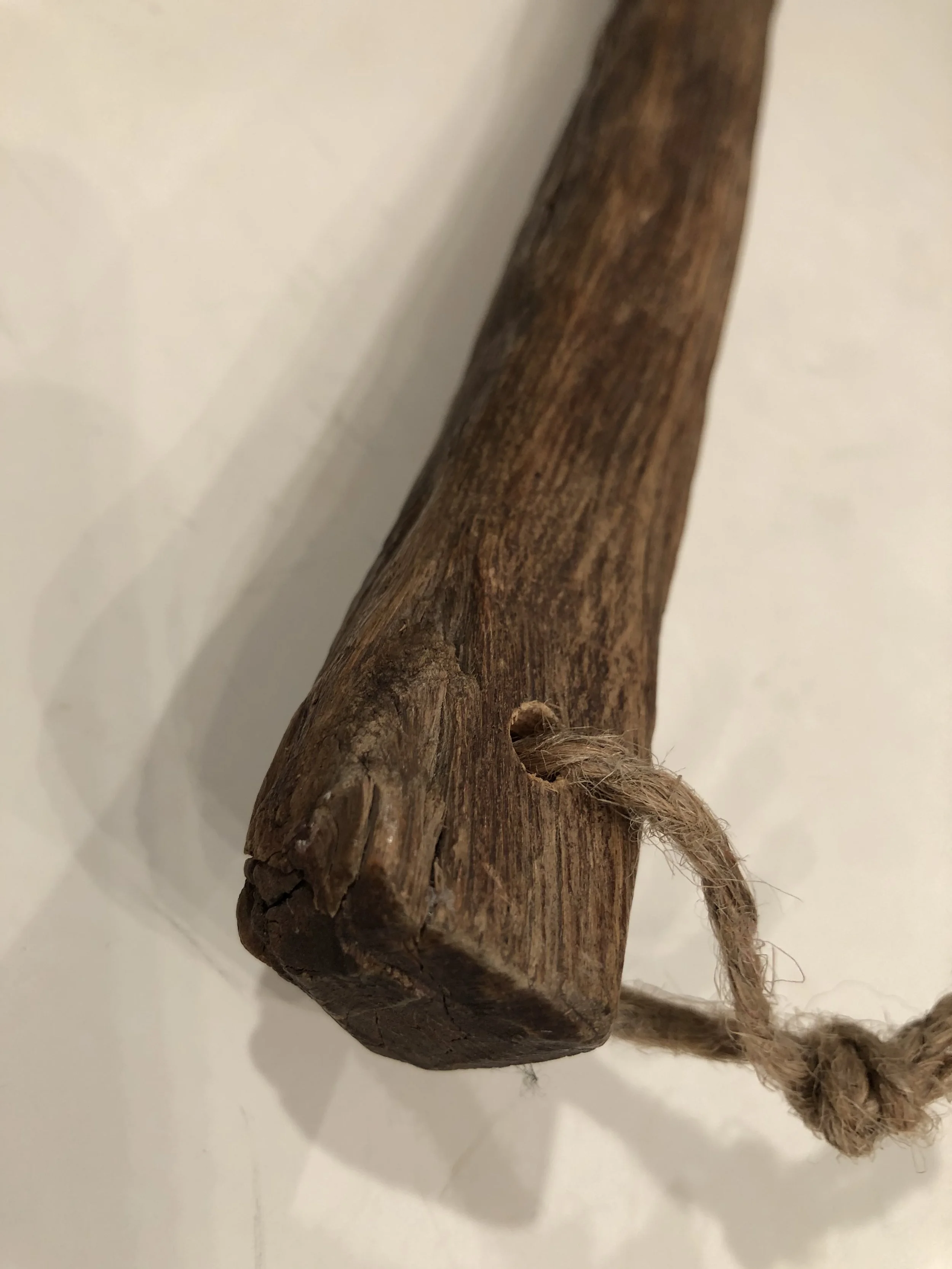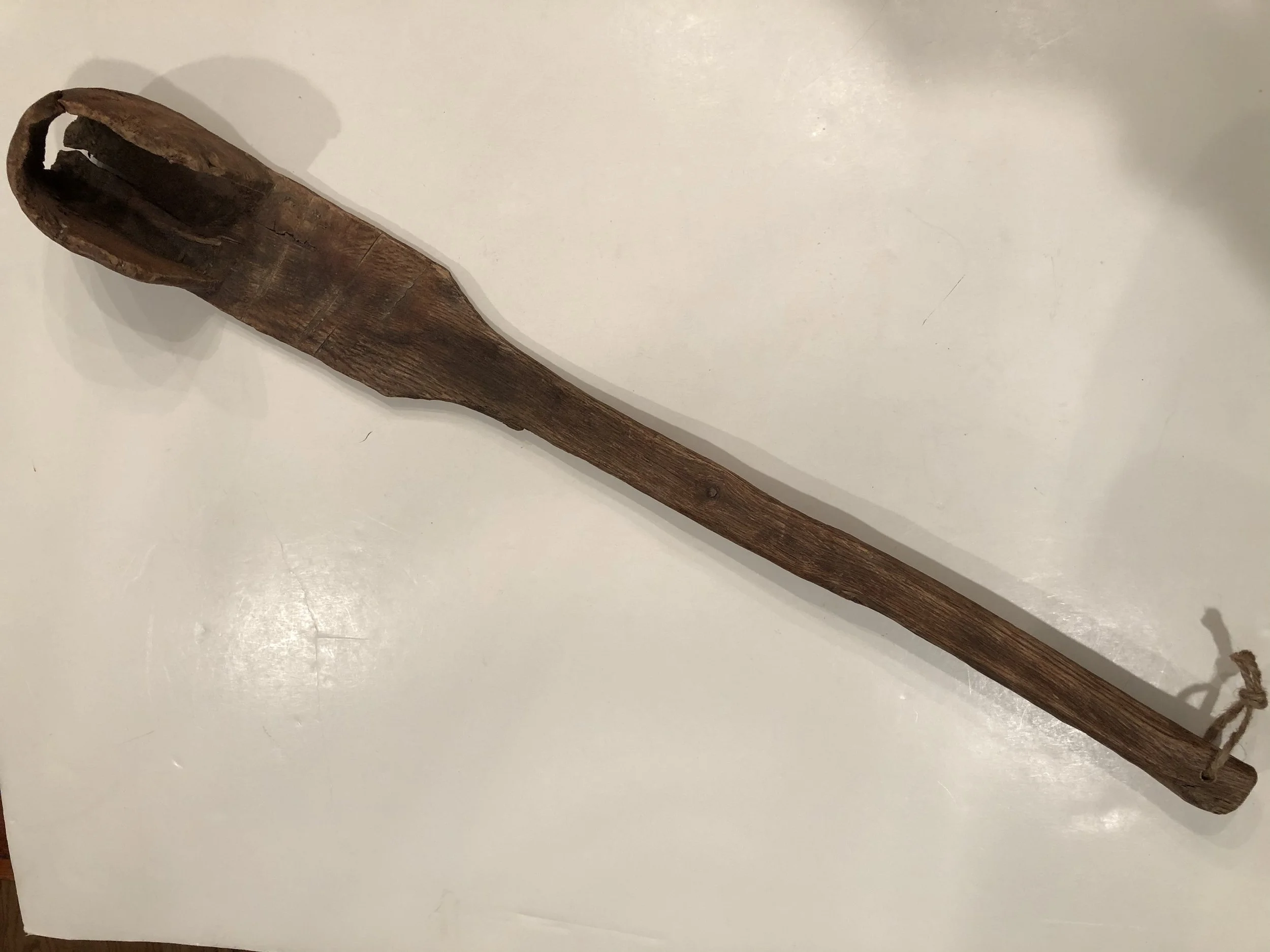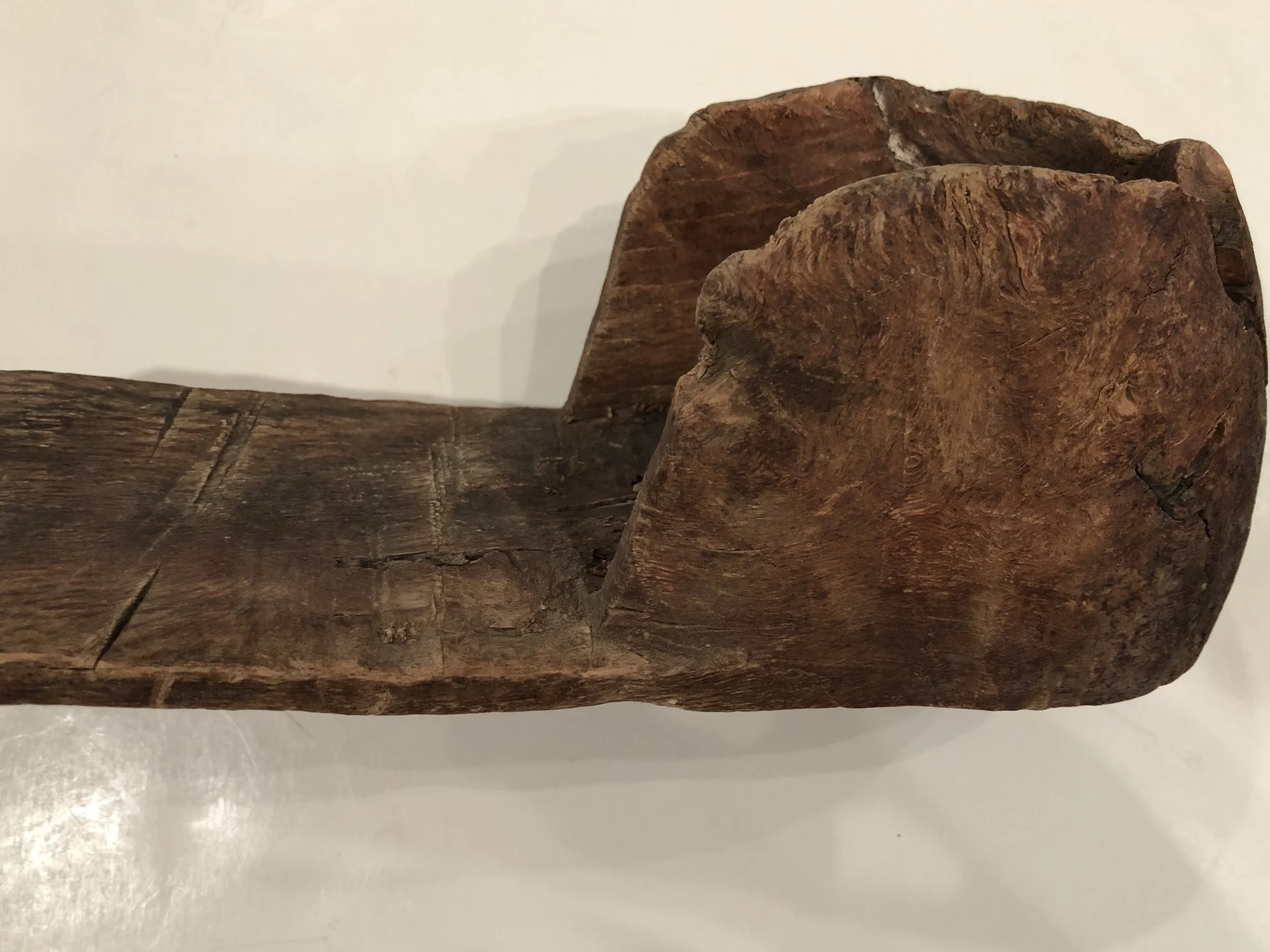17th century, Eastern Woodlands Indian Wooden Lacrosse Stick & Ball
17th century, Eastern Woodlands Indian Wooden Lacrosse Stick & Ball
This lacrosse stick and ball shown is an incredibly rare lacrosse stick set, of the very early form (17th century). It is hand-carved from a single piece of coffee-brown American hardwood. The stick has a lengthy handle with a perforated strap loop on top, a broad shoulder that widens into a spoon-like head, a raised rim along the end to accommodate the ball. With the stick is a wooden burl ball showing an ovoid (rather than perfectly spherical) profile that enabled the ball to change direction when rolling on the ground. The smooth patina on both the stick and ball inspires the sporting and spiritual history of these well used game pieces, with a wonderful presentation. The Indians treasured their Lacrosse sticks so much that many players requested to be buried with their stick beside them upon death, so this stick is very scarce, if any others exist, it is unknown. Size (stick): 27.8" L x 3.375" W ; (ball): 2.375" L x 2.2" W.
The French Jesuit missionaries in Native American during the 1630’s were the first to witness, write about, and, give Lacrosse its name. The early games were played with sticks and burl balls like this scarce surviving set. From the northern/eastern United States including Southern Canada, Woodlands Indians during the 1600’s used carved out wooden lacrosse sticks that were described by the Jesuits as essentially giant wooden spoons, with no netting. During the 18th century, the more advanced type of stick had one end bent into a 4 to 5-inch diameter circle, which was filled with netting to catch the ball. The lacrosse ball changed also. The first lacrosse balls were carved out of burl wood typically three inches in diameter, but some were also made of deerskin stuffed with hair. Over the years they went from approximately orange size to grapefruit size then back to the size used today. (I-840)
